#james taffe
Explore tagged Tumblr posts
Text
"Serving a Tudor Queen with Dr James Taffe"
youtube
Though it's short, he gives great info on the complex structure of a queen consort's household, focusing on the Tudor consorts. I can't wait to check out his book.
#james taffe#anne boleyn#catherine of aragon#katheryn howard#katherine parr#anne of cleves#jane seymour#Youtube
2 notes
·
View notes
Video
1054, 16440 and Taff Vale 85 at Keighley 22-03-25 por James Hoyle
13 notes
·
View notes
Note
i'm new to the tudor "fandom" can you explain why anne fans hate jane rochford?? like it's so strange seymour i can atleast understand even if their wrong but what on earth did rochford do to make them hate her?
✨ terfs/zionists fuck off ✨
well, i don’t consider myself the best spokesperson for ab fans, to be fair! certainly a lot of anne fans do like jane, and go to significant lengths to challenge the negative ideas surrounding her. many anne fans appreciate jane’s close relationship with the boleyn family, and recognise the misogyny and injustice present in both cases that led to each women’s executions, as well as in subsequent historiography.
however, with that said: yes, there can be a perceivable trend of anne fans not liking jane rochford.
firstly there’s the fact that jane has been scapegoated for anne’s death for centuries, and still is — many recent works have been all too willing to uncritically repeat the narrative of a scheming jane acting against the boleyns. if you are new to fandom, you may be unaware of the context for discourses around jane. eric ives’ book on anne is perhaps the most influential modern biography on her: it concludes that jane must have colluded with cromwell. susan bordo’s the creation of anne boleyn was hugely popular in fandom and likewise argues the same. conversely, jane’s main reappraisal should be credited to julia fox, who arguably takes a more critical view of anne boleyn. this is to say nothing of all the popular history books/documentaries on the subject, or dramatisations that still characterise jane as spiteful and scheming, such as the tudors, wolf hall, and channel 5’s anne boleyn. for anne fans, this view may well compound the idea that jane betrayed anne and caused the deaths of her and her brother. perhaps there is some substance to such a view, as james taffe’s recent biography of jane has countered fox’s reappraisal and defends the view that jane testified against the boleyns. personally, i think he over-corrected in this effort, but nevertheless, that may be the simplest answer to your question.
beyond this, i suppose historical evidence might arguably put them at odds (jane may have supported mary, she ‘confirms’ anne’s guilt through the testimony that anne slandered her husband, anne seems to have used and discarded her when banished from court for trying to remove another lady from court which challenges the idea of anne as a ‘feminist’ defender of women). beyond anne, people might take issue with jane’s involvement with katherine howard and thomas culpeper. but quite honestly, i think (some) anne fans don’t like jane rochford because i believe anne fans don’t like historical women, in general. we unfortunately simply cannot discount misogyny.
i get the impression that the dislike stems from the same issues anne fans have with other female contemporaries (catherine of aragon, mary i, jane seymour)… i.e. difficulties in tolerating women who aren’t entirely loyal and subordinate to anne, and a discomfort at the narrative of historiographical misogyny being applied to historical women other than anne. i imagine this is a symptom of the ‘not like other girls’-esque exceptionalism that anne’s fandom popularity is built on. in other words, i think acknowledging a historical woman other than anne might have been mistreated by the historical record seems to threaten the popular idea of anne boleyn as singularly persecuted. i have seen whinging about a historian tweeting their personal opinion (which they qualified as such) that jane was the “most maligned” woman in history. this prompted the (reasonable) argument that others had it worse than jane in historiography only to cite a (unreasonable) ‘better’ example of a maligned historical woman in the form of Literal Nazi™️ wallis simpson… and not, say, any historical women of colour for whom history has certainly been unkinder to than another aristocratic white woman. i have seen complaints of a “industrial complex” over jane in fandom, and i have seen fans sarcastically mocking “slander allegations”, attempting to diminish and delegitimise defence of jane — as if the dehumanising and misogynistic historiographical record regarding a woman judicially murdered by a man willing to change laws protecting people suffering from mental illnesses from capital punishment is anything but slander. i can't find any other explanation for this than misogyny, really.

4 notes
·
View notes
Text
“Serving the Tudors at dinner or supper was no less ceremonial. […] The Tudors had their own Carvers, Cupbearers, Sewers and Gentlemen Waiters, who served them ‘at hours and time of dinner and supper’ […] the carver came forward to cut the meat and, ‘with the accustomed reverences’, would ‘see the meat honourably served to the board’.”
— James Taffe, Serving the Tudors
6 notes
·
View notes
Text

All Creatures Great and Small producer Yvonne Francas gives an inside track on the Christmas episode
All Creatures Great and Small is heading back to our screens for a Christmas special, which is due to be full of seasonal joy and high emotion.
"It’s a journey of love, kindness, and warmth," reveals the show’s producer Yvonne Francas, as What to Watch catches up with her for an exclusive chat to get a sneak preview of the upcoming episode, airing on Channel 5 on Thursday 21 December at 9 pm. It will air on PBS Masterpiece in the New Year after the fourth season.
Set at Yuletide 1940, it sees caring vet James (Nicholas Ralph) spending the festivities away from both Skeldale House and his heavily pregnant wife Helen (Rachel Shenton) as he is training with the RAF.
Here, Yvonne Francas spills the beans on the All Creatures Great and Small Christmas special…
All Creatures Great and Small’s Christmas episodes are always a delight. Is there a pressure to produce something that's heartwarming for the show’s fans? “Yes, we want to deliver something special. It took 12 to 14 days to film and a couple of months to prepare. It's a pressure but a lovely one to have, because I’ve not worked on another show that’s as loved by its audience.”
How would you sum up this episode? “It's about the absence of people, because James and Tristan [his fellow vet played by Callum Woodhouse] are away at war and everyone is missing them. But it’s also about community and family coming together. There’s romance and joy, and wonderful animal stories! We even have a fight over who’ll be Father Christmas – Siegfried [Samuel West] doesn’t want that position!"
How is James feeling about being apart from Helen for Christmas? “James would love to be with Helen, but he's having to accept what serving means, because the people he is with are in the same boat and desperate to get home but they're not allowed…”
And Helen is heavily pregnant now. What has it been like for Rachel to wear the prosthetic bumps? “We’ve used several prosthetic bumps for Helen in this series and Rachel had an advisor, who used to be a midwife. But Rachel’s amazing and completely gets it!”
We hear the RAF base has an avian mascot that James needs to treat. Is there anything you can reveal about that? “Yes, the men need their mascot to be fit, as it gives them confidence to do their job. We chose a bird, because it echoes the RAF wings. It’s beautiful and we sent Nick for training to familiarise himself with handling it.
“We also have our regular animals at Christmas like Jess and Dash [Skeldale House’s dogs], Tricki-Woo [Mrs Pumphrey’s beloved pooch] and Oscar the cat. Humbug, who plays Oscar, loves being cuddled! We have another dog too, who isn’t friendly, and Carmody [James Anthony-Rose] deals with that…”
What was it like filming the airbase scenes at the Yorkshire Air Museum at Elvington, near York? “It’s so authentic. We brought in a Nissen hut and located three planes that still exist that would have flown to train airmen at the time and they flew around for us. I sat in one and you do feel exposed to the elements.
“For the RAF costumes, we used a costumier and also sourced some through our military advisor Taff Gillingham. Nick enjoyed wearing his, it gave him a different demeanour. He looks the part. In one scene, he had to run in the uniform, overcoat and hat and he never complained, even though it was June!”
Was it tough keeping everybody cool when you were filming? “We had around 115 supporting artistes throughout the Christmas episode, with many in coats and scarves for the party. As it was summer, when we were outside, we had shaded areas and cold drinks and Melissa Gallant, the executive producer, brought ice lollies! Then, in the studio, fans were on and doors were open when we weren’t shooting.”
And what can you tell us about the Christmas community dinner that kindly housekeeper Mrs Hall (Anna Madeley) organises in The Drovers Arms? “The war affects what they can provide, although Mrs Hall finds an ally who puts their hands on more food and it’s a wonderful spread. Our art department researched what they’d have been able to get hold of and Bethany Heald, our home economist, created some amazing food.”
How hard has it been to recreate a wartime Christmas? “The art department did research online and in books and magazines. We have paper angels and crepe paper banners because people made their own decorations then and our production base is opposite a Christmas tree farm, so we chose lovely trees.
“There’s a big one in Darrowby’s square and the special effects people created fake snow, which they sieved onto the ground, and they used foam when it needed to come out of the sky, which was supplemented with online visual effects. With roaring fires and carols too, the episode does feel Christmassy!”
The Christmas special of All Creatures Great and Small airs on Thursday December 21 at 9pm on Channel 5 and it will also be available on My5. It will air on PBS Masterpiece early next year.
#all creatures great and small#acgas 2020#acgas spoilers#acgas s4#acgas 4x07#helen herriot#james herriot#audrey hall
14 notes
·
View notes
Text
I consider Twitter to be a net negative overall, but I think Twitter is a net negative when it comes to the historian's profession in particular.
Twitter allows the likes of Mickey Mayhew and James Taffe to spout nonsense in public and generally behave like overgrown children, where everyone can see.
And given the state of the arts and humanities... that's really not helpful right now.
Edit: My issue with Taffe is him taking negative reviews out of context to make himself look like the victim and throw a pity party.
#yes yes i know about david starkey#but he got like mcfired#so he at least looks like an outlier#more normal babyish behaviour is more believable
12 notes
·
View notes
Text


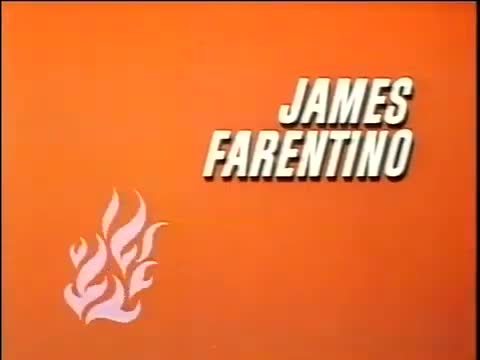




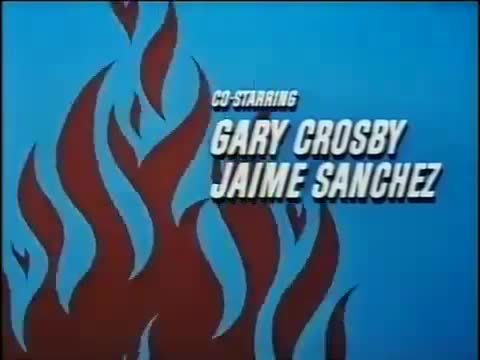


Wings of Fire - NBC - February 14, 1967
Action / Drama
Running Time: 99 minutes
Stars:
Suzanne Pleshette as Kitty Sanborn
James Farentino as Taff Malloy
Lloyd Nolan as Max Clarity
Juliet Mills as Lisa
Jeremy Slate as Hal Random
Ralph Bellamy as Doug Sanborn
Gary Crosby as Scott
Jaime Sánchez as Luis Passos
#Wings of Fire#TV#Action#Drama#NBC#1960's#1967#Suzanne Pleshette#James Farentino#Lloyd Nolan#Juliet Mills#Jeremy Slate#Ralph Bellamy#Gary Croby#Jaime Sanchez
4 notes
·
View notes
Text

Figurenanalyse: Jo McKenna in The Man Who Knew Too Much (1956)
The Man Who Knew Too Much (1956) ist der einzige Film Hitchcocks, den der Regisseur ein zweites Mal inszeniert hat. In einem Interview mit Truffaut kritisiert Hitchcock den ersten Film aus 1934 als das Werk eines Amateurs. Seine Neuverfilmung aus 1956 sei nach Hitchcock weitaus professioneller (Welk, 2011). Auch das Publikum scheint den neueren Film vorzuziehen: Auf IMDb liegen die Ratings für den 1956er-Film bei 7,4/10 Sternen, beim 1934er-Film liegt das Rating nur bei 6,7/10 Sternen (IMDb 2025). Film-Journalist Brian Welk vergleicht beide Verfilmungen insofern: “Superficially, the original is 45 minutes shorter than the remake and is in so many ways a more immediate, instantly gratifying thriller. The remake on the other hand has star power on its side, a big budget and the inclusion of the Oscar winning song ‘Que Sera Sera’” (Welk, 2011).
Einer der vier größten Unterschiede von der Neuverfilmung zu seinem Vorgänger ist das Setting: Während die 1934-Version in den Schweizer Alpen beginnt, spielt die Neuverfilmung in der Hauptstadt Marokkos, Marrakesch. Weiter ist das Kind von Jo McKenna (Doris Day) und Dr. Benjamin McKenna (James Stewart) (im ersten Film Jill Lawrence und Bob Lawrence) nun ein Junge (Christopher Olsen). Auch das langatmige Ende des ersten Films, die Schießerei am Dach und die Befreiung der Tochter durch die Mutter, wurde deutlich gekürzt. Vor allem letzteres ist Ausgangspunkt der vorliegenden Analyse: Die Transformation der Mutterfigur von Jill Lawrence zu Jo McKenna, insbesondere in Bezug auf ihre Einführung im Film und in ihrer Rolle in der finalen Rettungsszene.
In der 1934er Version des Films wird Jill Lawrence in der ersten Szene als eine taffe und burschikose Frau inszeniert. Sie ist eine erfolgreiche Gewehrschützin, voller Humor und Selbstbewusstsein. Auch Männern gegenüber tritt sie mutig und unabhängig auf. Sie steht ihrem Kind sehr nahe, scherzt mit ihm, und scheint auch mit ihrem Ehemann auf einer Augenhöhe zu sein. Sie ist augenscheinlich auf ihre Karriere fokussiert und liebt ihren Job.
Diese Charakterisierung hat Hitchcock in seiner 1956er Neuverfilmung nicht erneut aufgegriffen. Jo McKenna wird weder, wie ihre Vorgängerin, von ihrer Familie verbal angepriesen, noch als tüchtige und gekonnte Sportlerin dargestellt. In The Man Who Knew Too Much aus dem Jahr 1956 ist in der Eröffnungsszene direkt die ganze Familie zu sehen, die in der letzten Reihe eines Busses auf dem Weg nach Marrakesch sitzt. Es ist eine adrett gekleidete Familie, Jo McKenna trägt körperbetonte Kleidung und eine modische Frisur. Der erste gesprochene Satz ist vom Sohn Hank McKenna an den Vater gerichtet: „Daddy, you’re sure I’ve never been to Africa before?“ (00:03:21-00:03:24). Als Ms McKenna antwortet „Of course this isn’t really Africa, honey. It’s the French Morocco“ (00:03:45-00:03:47), berichtigt sie Mr McKenna („Well, it’s northern Africa“) und sie verliert kurz ihr Lächeln. Dann lächelt sie ihn aber weiter auf scheinbar bewundernde Weise an. Während der Sohn und der Vater sich über Marokko unterhalten, beschränkt sich ihr Teil der Konversation auf ein Minimum.
Als Hank einer Frau im Bus ihren Schleier abreißt und deren Ehemann ihn darauf ausschimpft, steht Mr McKenna beschützend auf, während seine Frau sitzen bleibt und Hank umarmt. Damit wird der Mann als die beschützende Instanz etabliert, die sich bei Gefahr vor Frau und Kind stellt. Als sich Louis Bernard (Daniel Gélin), der die Situation auf Arabisch auflöst, zu der Familie setzt, gilt seine Aufmerksamkeit vollkommen Mr McKenna. Auch als Bernard missversteht, dass der Sohn Jo heißt, wird das Missverständnis ohne ein Wort der Frau aufgeklärt. Bernard scheint nur Augenkontakt mit Mr McKenna zu halten, während sie sich über Mr McKennas Job und Leben, sowie über die Intelligenz des Sohnes Hank austauschen. Keine Frage geht an Ms McKenna. Sie stellt drei Fragen an Mr Bernard, die er einsilbig beantwortet und nach denen er sich direkt wieder an Mr McKenna wendet. Als sie fragt „What busines are you in, Mr Bernard?” (00:08:46-00:08:49), wird sie vollständig ignoriert.
Nach der Busfahrt drückt Jo McKenna ihr Misstrauen gegenüber Mr Bernard aus: Er habe etliche persönliche Fragen gestellt und Mr McKenna quasi ausgehorcht, während er selbst keine persönliche Information preisgegeben habe. Zwar wird hier eine gewisse Beobachtungsgabe Jo McKennas etabliert, die aber wieder neutralisiert wird, als Mr McKenna behauptet, sie würde nur neidisch sein, da Mr Bernard ihr keine Fragen gestellt habe. Im Endeffekt hatte Ms McKenna mit ihrem Misstrauen recht - Louis Bernard ist ein Spion. Der frühzeitige Verdacht von Jo McKenna hat aber keinen positiven Effekt. Louis Bernard stirbt dennoch und das Kind Hank wird entführt. Das Ehepaar Lucy und Edward Drayton (Brenda de Banzie und Bernard Miles), die im Film die Bösewichte spielen, hat Jo McKenna nämlich nicht verdächtigt; stattdessen überlässt sie ihnen ihren Sohn Hank fatalerweise zur Obhut, woraufhin sie ihn entführen.
Im Vergleich zur Figur Jill Lawrence aus dem Jahr 1934 ist die Charakterisierung Jo McKennas nicht mehr länger die einer taffen androgynen Frau, die aktiv und handlungsmächtig inszeniert ist und auf einer Augenhöhe mit ihrem Ehemann ist. Die neuere Figur ist stattdessen die einer sehr femininen und sanften Mutter, die sich eher im Hintergrund hält und beobachtet, anstatt aktiv mitzumischen. Auch der Fokus auf eine erfolgreiche Karriere, den Jill Lawrence an den Tag legt, ist nicht länger inszeniert. Im Gegenteil: Wir erfahren in einer späteren Szene, dass Jo McKenna eine erfolgreiche Sängerin war, diesen Beruf jedoch für ihren Mann aufgegeben hat, der in Indianapolis als Arzt stationiert ist. Es wird klar, dass in New York für beide die Möglichkeit einer Arbeit besteht, Mr Benjamin McKenna sich aber gegen einen Umzug ausspricht. Auch Szenen wie die, in der Mr McKenna Ms McKenna sediert, bevor er ihr erzählt, dass ihr Sohn entführt wurde, zeigt die Ungleichheit zwischen den zwei Ehepartner*innen. Mr McKenna steht klar über Ms McKenna. Er antwortet auf Fragen oder klärt Missverständnisse auf, bestimmt wo sie wohnen, entscheidet, ob eine Bedrohung besteht, und hat die Macht über ihren psychischen Zustand in Krisensituationen.
Beide Frauen, Jill Lawrence und Jo McKenna, sind in beiden Filmen den Großteil über passive Figuren. Sie sind beide von Emotionen übermannt, die durch die Entführung ihres Kindes hervorgerufen wurden. Der große Unterschied ist aber, dass Jill Lawrence im 1934er Film ihre Handlungsmacht wieder zurückerlangt. Sie ist in der finalen Kampfszene die Heldin, die mit einem kritischen Schuss zeitgleich den Bösewicht vernichtet und ihr Kind befreit, die sich beide auf dem Dach eines Hauses befinden. Sie spielt somit schlussendlich eine aktive und unverzichtbare Rolle in der Befreiung ihres Kindes.
In der Neuverfilmung des Films wurde diese beschriebene Szene komplett gestrichen. Da Jo Mckenna nicht als Gewehrschützin, sondern als Sängerin inszeniert ist, ist die finale Szene so abgeändert, dass sich das Ehepaar in das Haus der Entführer begeben. Ms McKenna spielt den berühmten Song „Que Cera Cera“ auf dem Klavier, woraufhin ihr Sohn das Lied mitpfeift. Durch diesen Umstand kann Mr Benjamin McKenna seinen Sohn finden und retten. Mr McKenna stößt daraufhin den Bösewicht die Treppe herunter und besiegt ihn somit. Während der Befreiungsszene sitzt Ms McKenna unentwegt am Klavier und hilft – außer mit einer musikalischen Untermalung – nicht bei der Rettung ihres Kindes.
Zusammenfassend lässt sich sagen, dass sich die Figur der Mutter in der Neuverfilmung von Hitchcocks The Man Who Knew Too Much stark gewandelt hat. Während die Mutterfigur in der Erstverfilmung, Jill Lawrence, durch ein burschikoses und selbstbewusstes Auftreten charakterisiert ist, sowie mit einem Fokus auf einer Karriere, die schlussendlich die Rettung ihres Kindes ermöglicht, ist die Figur der Jo McKenna aus der Neuverfilmung eine eher zurückgezogene, passive Mutter, deren Mann sie und ihr Kind beschützt, ob physisch – oder mental mit Sedativen. Sie hilft bei der Rettung ihres Kindes zwar dabei, dass Mr McKenna seinen Sohn schneller findet (erneut durch die Fähigkeiten ihrer Profession) – bei der tatsächlichen Rettung und dem Besiegen des Bösewichts spielt sie jedoch keine Rolle und ist somit bis zum Ende des Films eine passive Figur.
Quellen:
The Man Who Knew Too Much. Regie von Alfred Hitchcock. Paramount Pictures. 1956
IMDb. The Man Who Knew Too Much (1934): https://www.imdb.com/de/title/tt0025452/?ref_=nv_sr_srsg_6_tt_7_nm_1_in_0_q_the%2520man%2520who%2520knew%2520, zugegriffen am 23.01.2025
IMDb. The Man Who Knew Too Much (1956): https://www.imdb.com/de/title/tt0049470/?ref_=tturv_ov_i, zugegriffen am 23.01.2025
Welk, Brian, 2011. „The Man Who Knew Too Much: 1934 Original and 1956 Remake“ in __The Sanity Clause. Zugrgriffen am 23.01.2025: __https://www.brianwelk.com/2011/12/15/the-man-who-knew-too-much-1934-__original-and-1956-remake/
0 notes
Video
vimeo
Squarespace ~ Blueprint AI from ManvsMachine on Vimeo.
Human Powered
Working closely with our friends at Squarespace, we conceptualised designed, and directed a commercial to launch Blueprint AI.
Using a blend of practical effects and meticulously crafted design, the film brings a designer’s sketchbook to life, showcasing how their ideas and creative process shaped this innovative new tool.
CREDITS —
Client: Squarespace
Design, Direction & Animation: ManvsMachine
ManvsMachine Team: Mark Haley Tom Bunker James Lowrey Carlos Cortes Josh Barnes Steph Ramplin Alex Schlegel Bruno Faiotto Alvaro Navarro Borja Holke Liam Sielski Waters MichaelJohn Day Gok Gursoy
Cinematographer: Kaname Onoyama
Production Designer: Simon Davis
Stylist: Taff Williamson
Colorist: George Kyriacou @ Black Kite
0 notes
Text
2 janvier 2025
Super soirée billard avec les copains :) J’ai découvert un nouveau lieu puis j’ai revu G que j’avais pas vu depuis un bout de temps ! On m’a réappris à jouer et c’était très drôle. À un moment, mon équipe perdait alors je suis allée demander à un monsieur de jouer à ma place : depuis le début de la soirée il jouait trop bien à côté de nous, alors je lui ai fait les yeux doux et c’était impressionnant comme il était fort. Il a mis deux boules avec des coups trop cools, on était en mode waw. Après ça, on a décalé dans un autre bar (Au George pour changer) rejoindre d’autres copains. C’était très calme car y’avait pas la Jam ce soir-là, alors on avait un peu le bar pour nous. E m’a présenté sa cousine mais apparemment elle savait déjà qui j’étais (on se demande pourquoi). D’ailleurs, il m’avait acheté deux Monster (anecdote à suivre). La soirée continue, c’est vraiment cool, puis mon coloc nous rejoint pour nous ramener en voiture car R est rentré plus tôt pour le taff, etc. Bref, vient le retour et là je récupère une canette sur les deux, car comme ça je lui dis que je reviendrai chez lui. Au passage, on s’arrête 10 min puis finalement 1h chez E, c’était cool, puis je crois que K s’est réconcilié avec lui, il pleurait presque, alors à la fin ils se sont fait un câlin. On a finalement décidé de faire un dernier bar tous ensemble et on a pris des bouteilles de punch jusqu’à la fermeture du bar.
Après ça on part déposer K en dehors de Toulouse, puis sur le trajet, on m’embête et pour me défendre je mords K et S, mais S finit par saigner (j’ai pas fait exprès). Après c’était mérité, ils font que de me faire mal à chaque fois car ils sont bêtes. Bref, je lui mets un pansement Hello Kitty, puis on voit que la canette a été percée par un truc et elle explose à moitié. Je panique et j’ouvre ma portière et je la jette sur la route (désolée la planète, mais elle nous explosait dessus, puis y’en avait partout dans la voiture), j’étais dans un James Bond en fait.
Bref, soirée très agréable quand même. Les garçons m’ont surprise à sourire comme une idiote à un moment, alors quand ils m’ont demandé pourquoi, je leur ai juste dit que j’étais heureuse d’être avec eux. Faut dire que c’est vrai que je souris pas souvent même quand je suis bien. Mais en tout cas, je commence très bien l’année.
Ah aussi, Nael m’a un peu spamé de messages, alors je réponds plus, en plus il m’intéresse zéro.



1 note
·
View note
Text
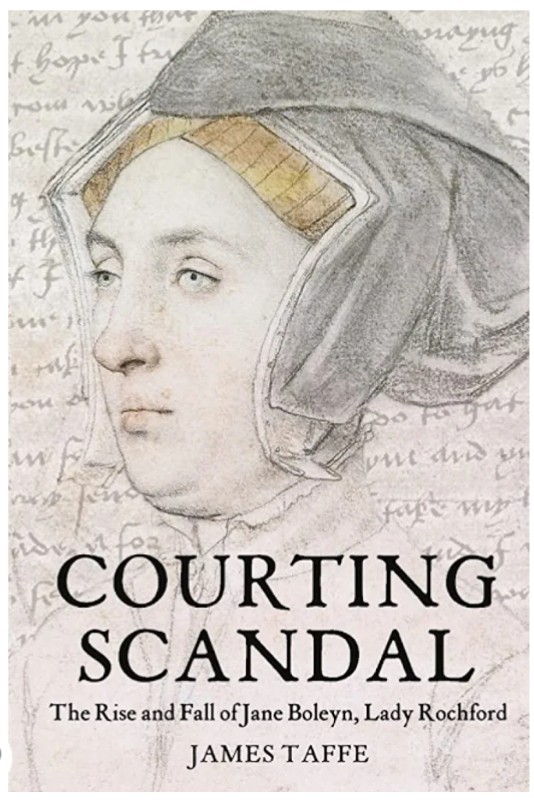
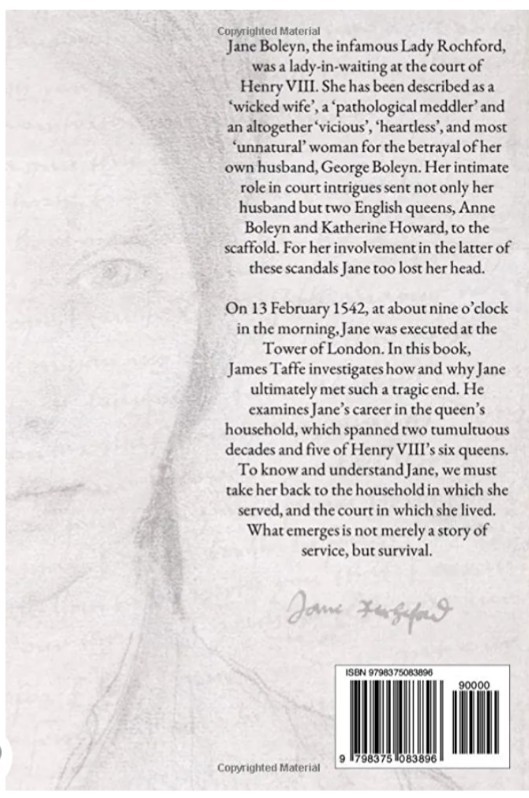
Courting Scandal: The Rise and Fall of Jane Boleyn, Lady Rochford by James Taffe
Just bought the latest book about Jane Boleyn, Lady Rochford, which was published just last week. Cannot begin to tell you how excited I am for another more favourable light to debunk all the myths, lies, and slander about the tragic lady-in-waiting. It's about time we had someone else in her corner 💜
15 notes
·
View notes
Note




What are your thoughts on Jane Boleyn, and the role she supposedly played in the fall of 3 Queens (Anne Boleyn, Anna of Cleves, Katheryn Howard)? Do you think she has been too maligned by historians for centuries, especially when it comes to the relationship with the Boleyns (it seems she got along with Anne)?
Now that I've read both works and compared them side by side, I suppose I would say my stance on Jane Boleyn falls somewhere in between that of Julia Fox and James Taffe ('Somewhere in between' is not, btw, Alison Weir); although closer to the former than the latter. Offering critique of both biographies, I would say that of JF is too apologetic (smoothing out wrinkles that exist in her arguments rather than acknowledging them) and JT is too severe.
Especially when it comes to the relationship with the Boleyns? Yes and no. Obviously she was married to George, she sent him a message of comfort while he was in the Tower, and wore only black the rest of her life, which was quite the potent statement. However, I would allow for the possibility that she potentially, inadvertently implicated him or AB (ie, testimony of hers was twisted to suit the crown's case). This is where I think there are flaws in the arguments of some of her defenders-- they cannot allow for even that possibility and so make claims that disallow it; some of which are untrue. 'Jane was only blamed as a means of absolving Henry in the whitewash of Elizabethan propagandists' is not true. Johannes Sleidan in 1545 claimed that Anne and George died by her 'false accusation'. Sleidan was a Reformer, so he would have been more sympathetic towards the plights of these two than the average person, and would have spoken to others that were as well, but the motivation to vindicate Elizabeth did not yet exist; she was at this point the very unlikely third in line to the throne.
I do appreciate that you said 'got along' with Anne, not 'besties', because...it's possible they were very close, certainly, but we must also allow for the possibility of animosity. The linchpin for the argument of closeness is the report from Chapuys that they 'conspired together' to banish Henry's mistress from court. Was this the precise truth? Considering the source I'm doubtful. Probably there was a lady Henry was serving at this time (although that we never have a name makes the story somewhat suppositious), but did they need to have 'conspired together' against her for Jane to be banished from court (which is what happened instead)? Jane might have merely made Anne aware of her, and Henry finding out that she'd been the source would have been enough for banishment. Or, as was presented plausibly in Adrienne Dillard's fictional rendition, Jane might have dropped hints to Cromwell that this mistress was a supporter of the two exiled and contumacious royal women that were Anne's adversaries, Cromwell might have passed this along to Henry, and Henry might have banished Jane for shattering the illusion that this woman had no independent ambitions or ulterior motives and merely let him hit for the sheer pleasure of his company.
If this was evidence of closeness, and it might be, then we also have to remember that the end result was Jane's banishment from court, and that there is, as JT fairly pointed out, no evidence that any of the Boleyns spoke in her defense, favor, or for her return. It would take an extremely magnanimous person to accept all that with equanimity and not feel any resentment whatsoever. So, if there was intimacy, there might have also been rift.
That leaves the question: enough 'rift' for her to seek vengeance? I doubt that much for all the reasons Fox outlines in her biography, but at the same time I wish there was not this relentless push to only defend women that we assert 'deserve' defense, on the premise they were entirely selfless, accepted every insult with grace, never kept any grudges, never had personal ambitions (the actions she took during the queenships of those you mentioned would suggest otherwise), mixed emotions, or conflicting loyalties; that we could acknowledge that acknowledging the agency of historic women also means acknowledging they were capable of making mistakes.
12 notes
·
View notes
Note
Does Jane Seymour have a written will? It is said that she left jewelry for her servant?
✨ terfs/zionists fuck off ✨
if a will was written, it hasn’t survived — nor has any reference to it’s existence. what you’re probably thinking of is jewels bequeathed from jane’s jewel inventory. from nicola tallis:
“following the death of jane seymour in october 1537, her jewel inventory reveals that of the 508 items individually listed, the kings gave away as gifts. […] what is not known, however, is whether these gifts were made at jane’s request before her death — in which case she may have given some indication as to who she wanted to reward and with which items — or whether it was a decision made by the king. in either scenario, that some of the recipients were given more than one piece of jewellery could be a sign of the esteem in which the late queen and possibly the king had held them.”
jewels and material goods could serve as payment or reward equal to money, just as plate was often given in place of payment. james taffe points out, “books for the queen’s jewels taken for jane seymour in 1537 and katherine howard in 1541 show that both queens gave an entire catalogue of precious jewels, beads, brooches, chains and girdles to their ladies and gentlewomen attendants”. tallis points out the fiscal function of these gifts: “jane seymour’s jewel collection provided her husband with an effective way of rewarding the good service shown to his former queen, while not incurring any costs” — similarly, katherine howard “pleaded with henry ‘to bestow some of her clothes on those maid-servants who had been with her from the time of her marriage, since she had nothing else left to recompense them as they deserved’”.
7 notes
·
View notes
Text
“John Croft, who served his cousin, Jane Seymour, struggled to find a foothold at court for many years after her death in 1537. Sir Wymond Carew, the late queen’s receiver-general, wrote on Croft’s behalf to Anthony Denny and John Gates, of the king’s Privy Chamber, so that he might be appointed as a gentleman waiter to Prince Edward, Jane’s son, ‘even without wages’. ‘I am bound to do for this gentleman, Mr. Croft, all I can’, Carew began, before reminding them that Croft had served Jane ‘honestly’, and the queen ‘did favour him well’.”
— James Taffe, Serving the Tudors
0 notes
Text
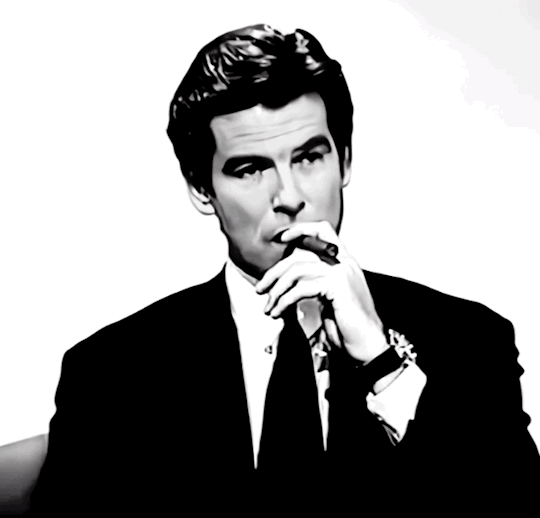

Pierce Brosnan Interview for James Bond Goldeneye (1995)
during the interview, Brosnan was smoke cigars. He really 90s one and only James Bond.
The source:
42 notes
·
View notes
Note
So, what are your thoughts on James Taffe's book on Jane Boleyn, is it worth a read? I read somewhere that it shows a more critical POV On Jane that Fox's bio (of which I have only read some excerpts)? If so, I don't think it's necessarily a bad thing, I thing Jane had a good relationship with the Boleyns and the "jealous vixen" reputation is quite unfair, but on the other side you have to admit that she could have handled things with Katheryn Howard waaay better. Do you think "Courting Scandal" is a good addition to "Lady Rochford historiography" or is it "as good as a Weir book"?
I've not read it myself, but quite a few people who are more knowledgeable than myself on Jane Boleyn have criticised Taffe for basically using sources to support his arguments that Fox proved were either unreliable or straight up don't say what historians assume they say eg. the notorious reference to "damned by the testimony of a woman" which historians have said MUST refer to Jane Boleyn but more likely refers to Lady Worcester or the other woman whose name I can't remember off the top of my head. So basically his historiography takes us back to the 1990s and 2000s.
I do think there is something of a double standard when people talk about female courtiers and male courtiers. Cromwell gets to be scheming and cool, he gets Wolf Hall written about him, his ambition is sympathetic, he gets to be nuanced and badass. But if a woman like Jane is scheming and ambitious, she doesn't get to be badass and cool, she's given bitterness and resentment that male courtiers like Cromwell don't have, no-one likes her, and at MOST she gets half-hearted pity for her terrible marriage.
Also James Taffe has behaved very badly about it, if you ask me. He went straight away to whine on Twitter about the negative reviews and how unfair they were, selectively quoting them- because of course, if he hadn't quote mined, it would be obvious that the criticism wasn't unfounded. And he knew that! That's why he quote mined! And then historians like Owen Emmerson give him kind words about it because naturally they assume he was being 100% honest and the reviews WERE mean.
#jane boleyn#catherine howard#tudor history#henry viii#sorry i've just realised how many unanswered asks i have AHHHHH
6 notes
·
View notes